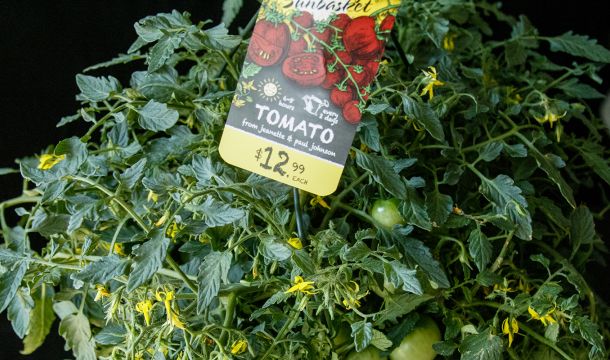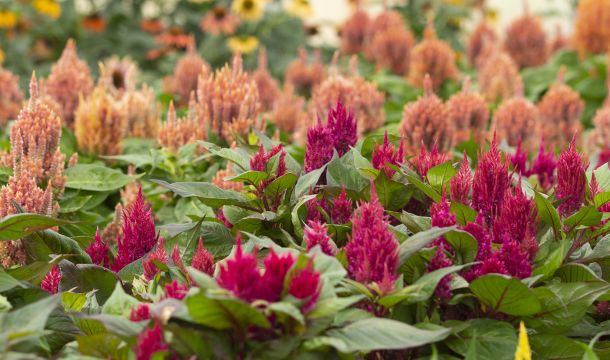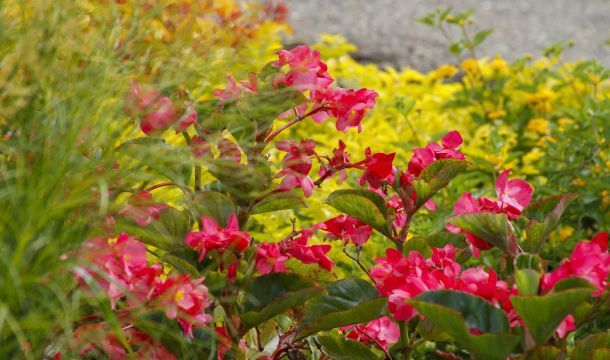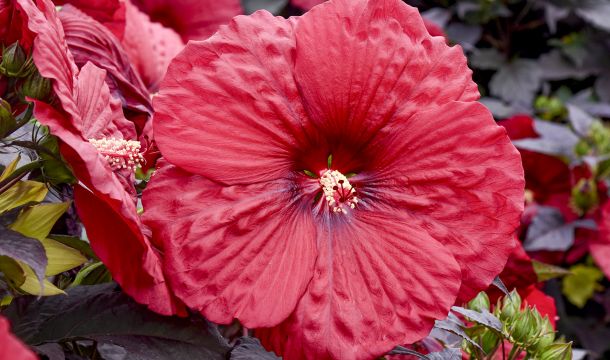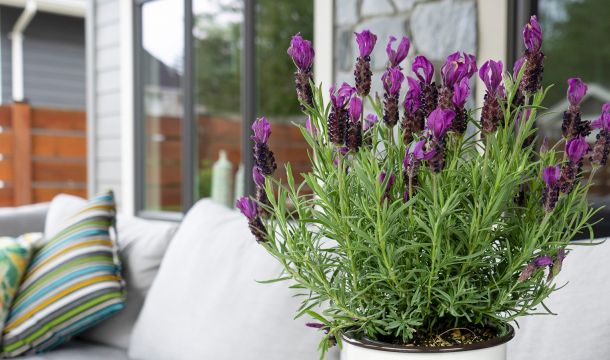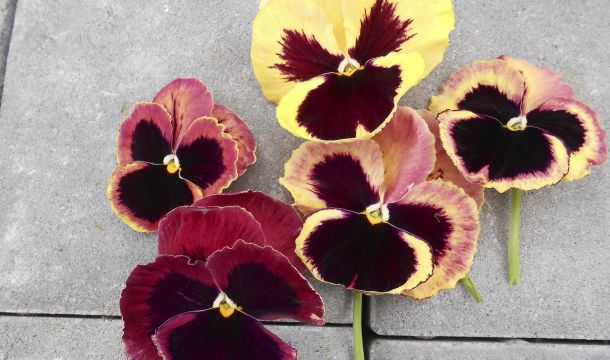Signaling with Acanthus

“Acanthus looks like something that came up from Jurassic Park,” says David Lee of Adcock’s Nursery, a wholesale nursery out of North Carolina. The appeal of acanthus, in a nutshell, is the unusual display in both flower and foliage. Mark Heubert of The Perennial Farm from Maryland points out that “We don’t sell a lot of acanthus, but we sell what we grow. There’s demand for it in our mid-Atlantic area.”
Mark notes that his customers to the north use acanthus more as a container plant. Garden centers like the Whitewater variety for its dramatically variegated leaves and spectacular floral display. “It’s garden candy.” Conversely, observes David, landscapers tend to bring in what the designers and architects spec out—the classical Acanthus mollis. “Landscapers will do designs on their own, and the wise ones know about it, but they also have to have the right customers for it.”
The famous Corinthian leaf that drives much of Acanthus sales. The leaf is very big, larger than a hand, with thick stems anchoring them to the crown. This leaf is unique to the mollis species. Other species have deeper cuts or spiny edges.
 Acanthus mollis
Acanthus mollis
The Job Acanthus Does
Acanthus in the garden works along a specific swath of the United States running roughly through the middle of the continent, sagging somewhat in the central plains and bound by two facts: the cold and the heat. Acanthus is a perennial, but a tender one. It can handle cold down to Zones 6 or 7 (depending on variety) but the plant needs good siting. Every few years it runs into a winter like this year, so the protection found to the lee of the stone helps.
In the North, acanthus does find work as a container plant where the dramatic foliage and flower display generates conversations, especially the variegation of Whitewater. A single plug can bulk into a fine specimen plant and, for retail centers, it anchors cutting edge plant designs.
The pure white stalks of Acanthus 'Rue Ledan' is extremely hard to find—the unicorn of the genus. This planting shows the general habit of all Acanthus.
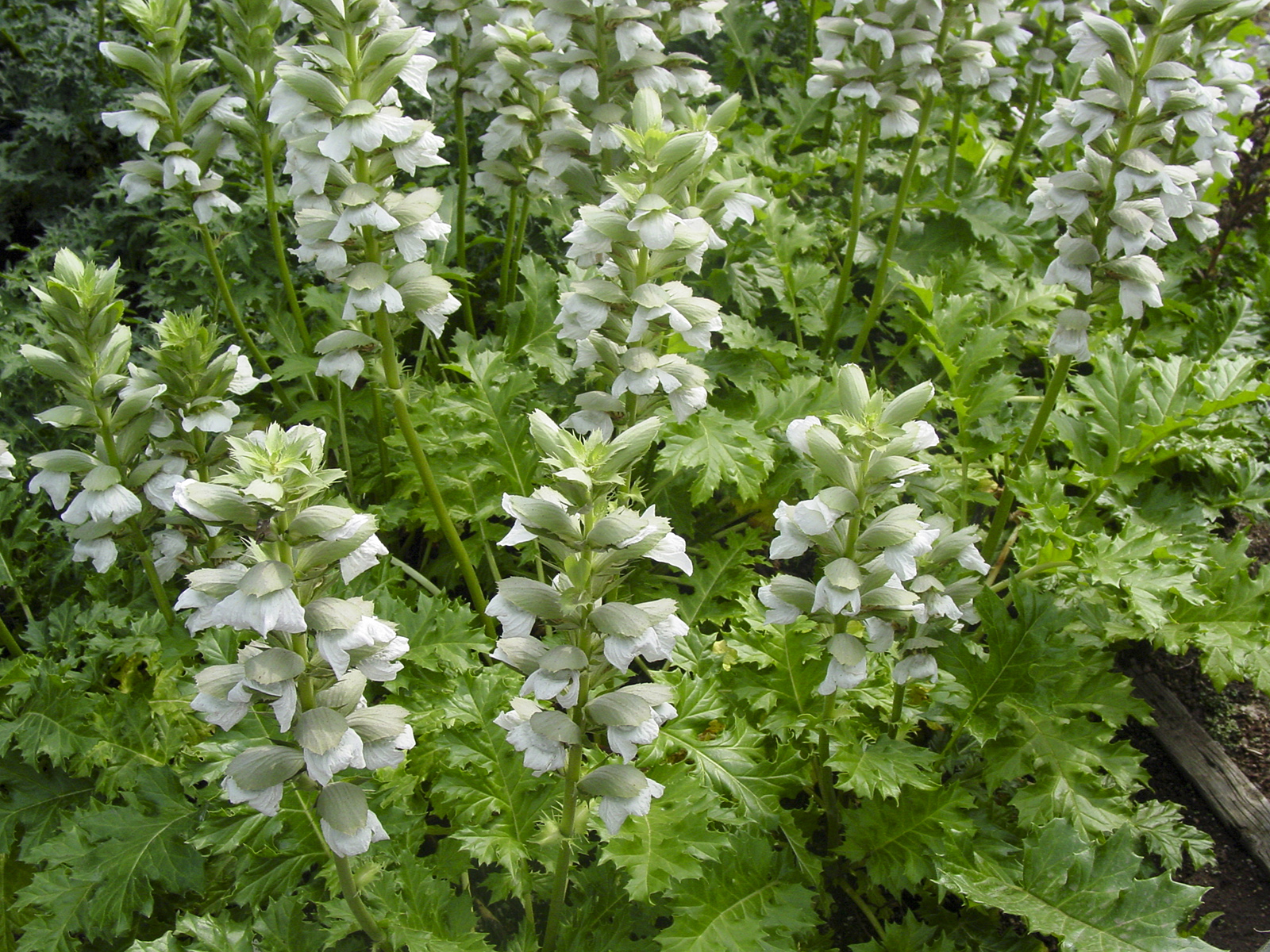 Acanthus Rue Ledan
Acanthus Rue Ledan
In the South, acanthus is hemmed in by summer dormancy. When siting an acanthus, the best places seem to be those zones where light and shade transition back and forth. Morning light generates the best flower stalks and afternoon shade keeps the foliage fresh and green as long as possible. If the plant isn’t forced to shield itself from the sun it will stay perky all summer long.
If this sounds fussy, it is. However, if you love your car, you forgive its sins, no matter the repair. Ask any Jaguar or Fiat driver, “Why?” and you will get a passionate answer, not a logical one. Acanthus is a plant unlike any other.
The goth girl of the Acanthus, spinosus. All Acanthus have tall flower stalks with very thick columns, decorated with hooded or clamshell flowers. The prickly nature of spinosus spreads to the spiny flower stalk just opening on the right. Look into the background and you will see the thistle-like leaves. Those pricks aren't soft, by the way.
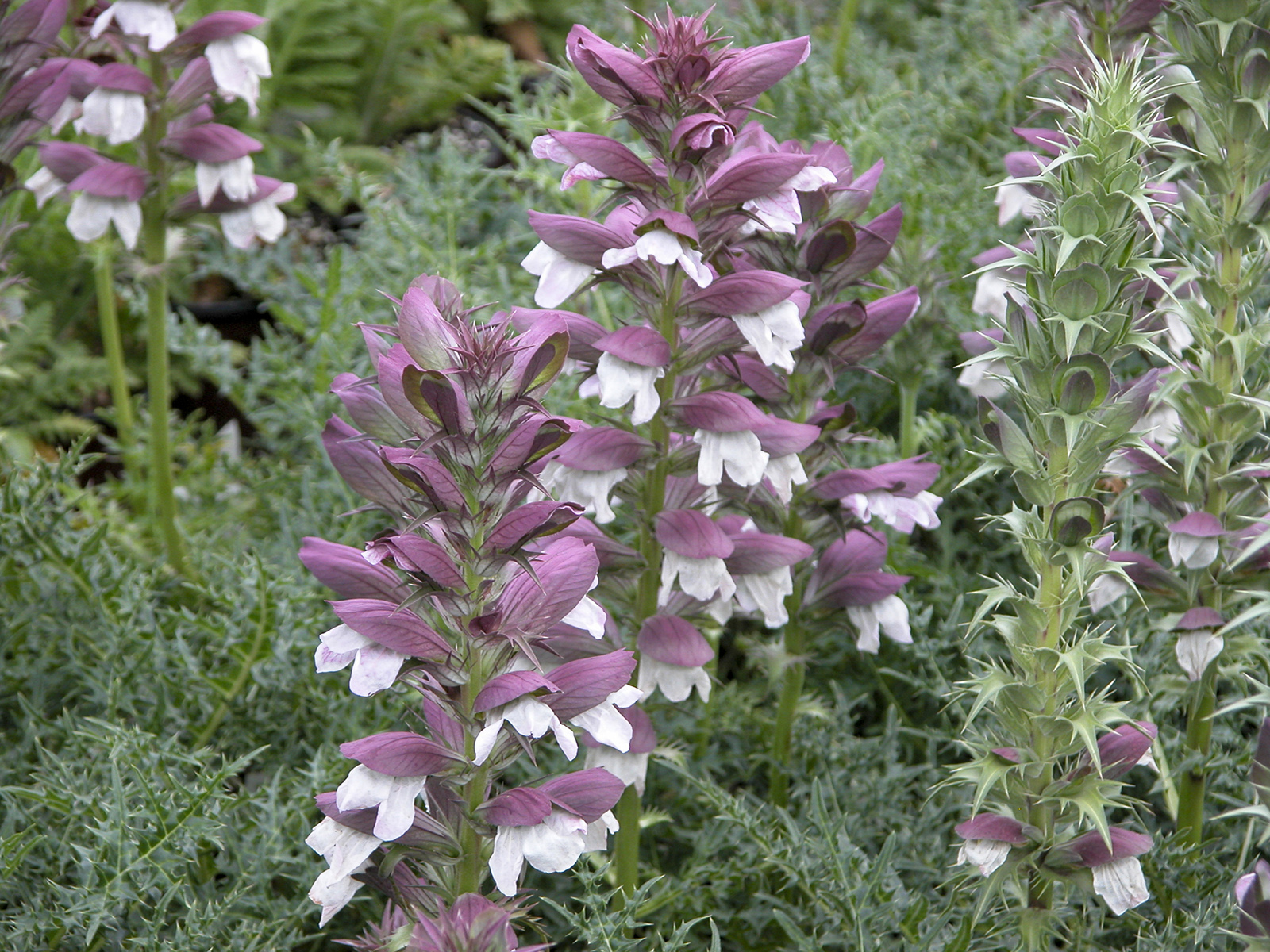 Acanthus spinosus
Acanthus spinosus
Signaling The Market
A quick Google search sets up the dots for connecting: Black Creek in central Pennsylvania; Perennial Farms in Maryland; Adcock’s, Plantworks, and Plant Delights in North Carolina; Gwinnett Greenhouses northeast of Atlanta; Sugar Creek in St. Louis; Herrmann Wholesale Nursery of Forth Worth, and Digging Dog Nursery out of California.
All these firms, wholesale or retail, compete on choice using a TT&O strategy (This, That and the Other). Every metro area has businesses that cater to buyers who need product outside the high-volume mass market stream. They use words like “we are specialty” (wholesale) or “we are boutique” (retail) or “we carry plants other places don’t” (cut to the chase). Yes, price is still in the conversation, but these are words that alert the buyer that interesting inventory exists inside.
In short, acanthus attracts customers more than it attracts direct sales of trays. When you carry acanthus you tell your customer base on the very first page of your catalog, price list, or shopping cart—under ACA—that you have interesting stuff. You’re rummageable. Savvy customers respond: “Oh, look—they have acanthus! I wonder what else they have?” Then they start to browse. And that, in a nutshell, is signaling.
Shake away the soil from the plug and you will uncover several thick taproots ready to anchor the plant into the garden. Surrounding them is a network of feeder roots that reach out to pull the nutrients into the plant. Transplanting Acanthus is a chore because any root fragment left behind will resprout.
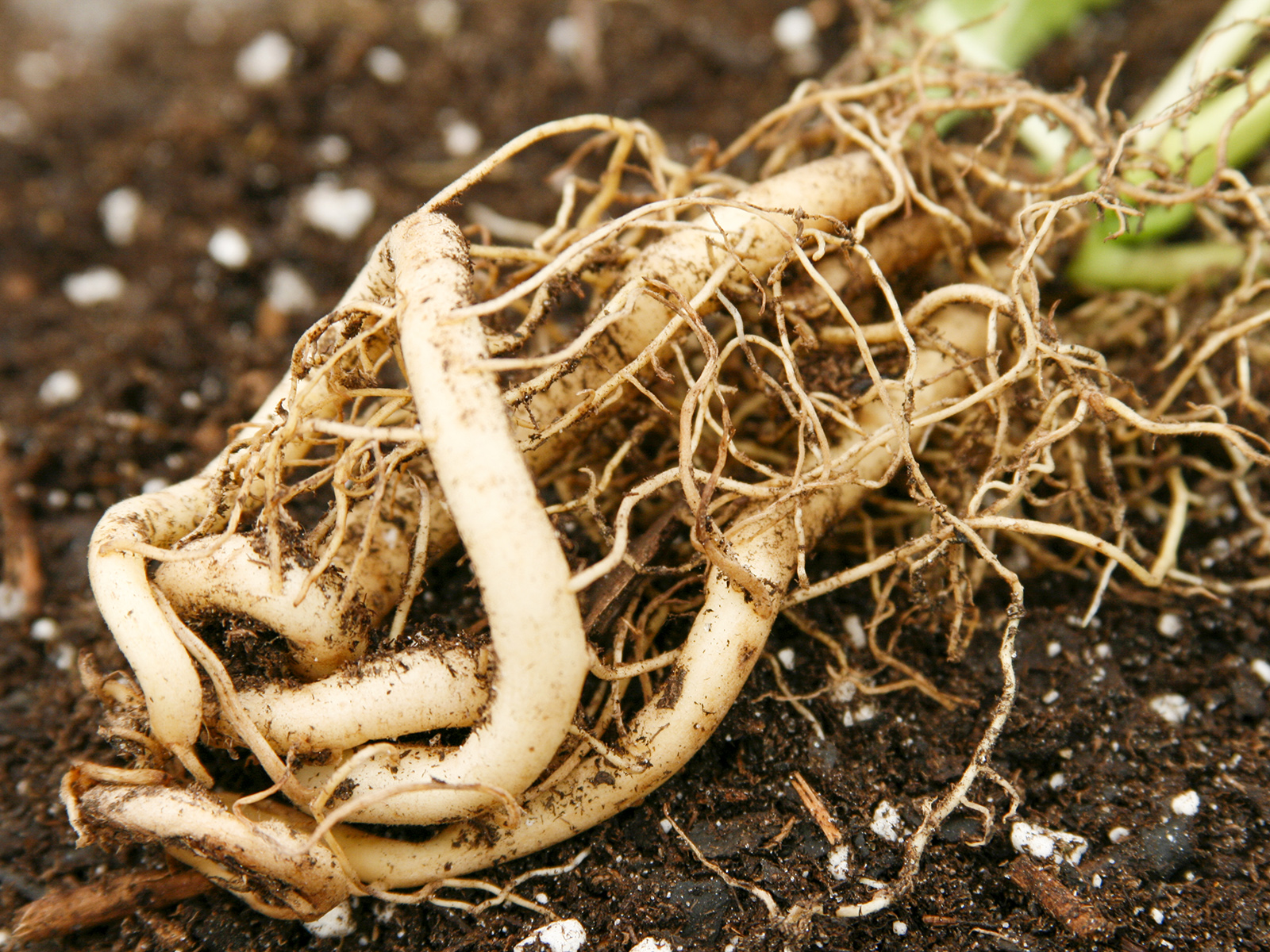 Acanthus mollis roots
Acanthus mollis roots
Noteable Varieties
-
A. mollis is the standard in the trade. If you offer only one acanthus, it is usually A. mollis because of its classical connection to Corinthian columns. This one is on the tender side at Zone 7.
-
Whitewater has the dramatic variegation, cleaned up for horticultural production. Other cultivars do exist, like Tasmanian Angel. This one is a found variety, wildly variegated with the quirks and kinks intact.
-
Morning Candle is a hybrid hardy down to Zone 6. For much better summer tolerance, look for Summer Beauty.
-
A. spinosus is the most goth-looking of the acanthus, like a thistle having a fashion show. If you can sell punk garden designs, you can sell A. spinosus.
- Rue Ledan provides columns of pure white blooms. It's worth having if you can find it.
Whitewater offers a lot of scrollwork for the planting. The flower stalk emerges with intriciate scrollwork on the buds, opening with complex shapes, matures with large cut leaves, splattered white margins and a huge dramatic stalks. As they age, the flowers slowly take on a lavender hue.
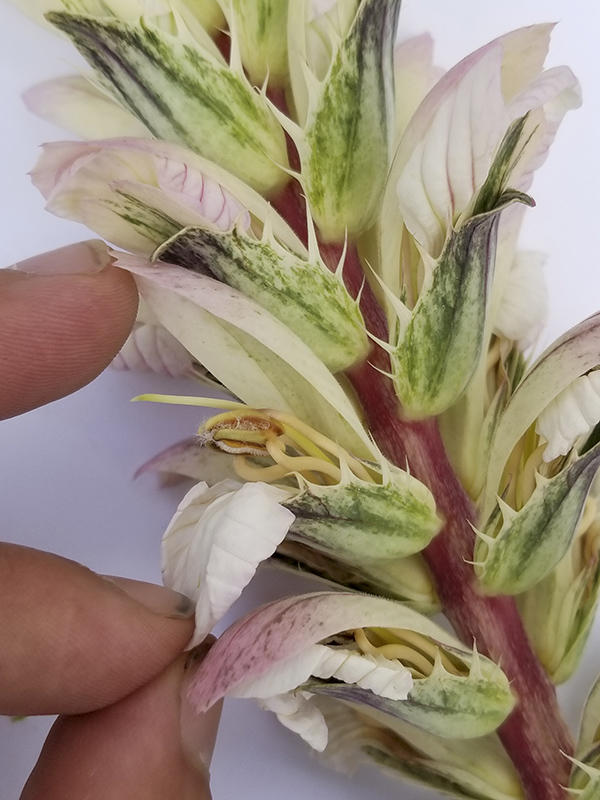 |
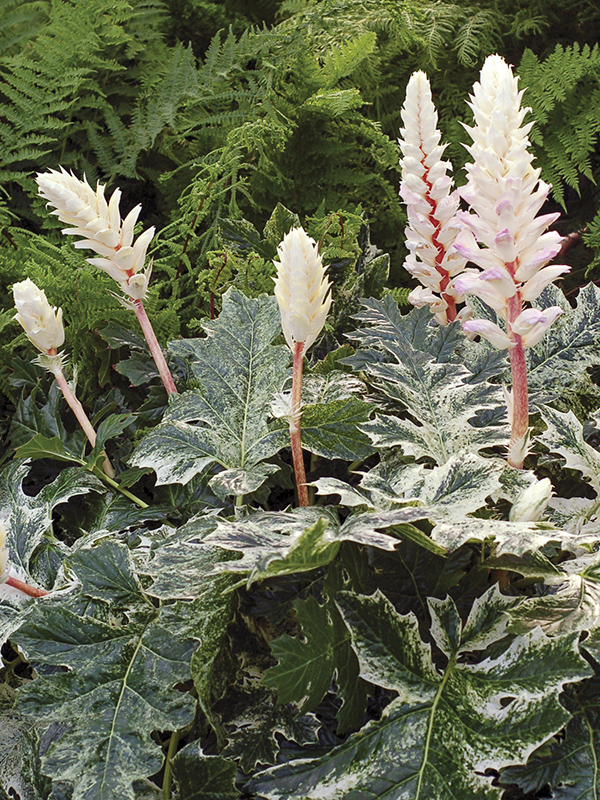 |
 |
| Flower stalk opening | Whitewater habit in prime | Flower stalk aging |
Popular Articles
